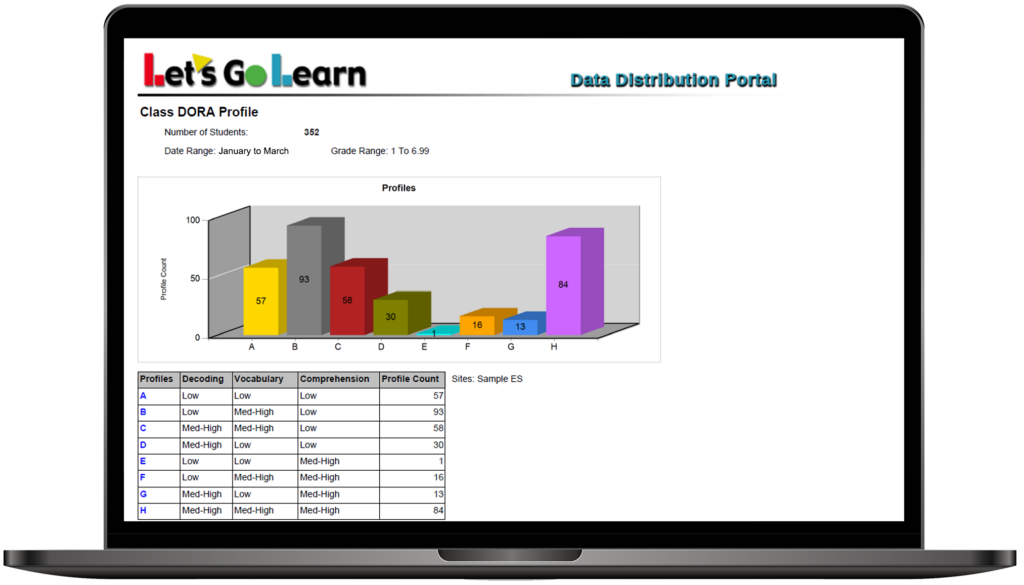How to Assess and Adjust Mid-Year Academic Goals
As we find ourselves at the midway point of the academic year, it becomes increasingly important to pause and reflect on the goals set at the beginning of the school year. Whether you’re a student navigating the challenges of coursework, an educator guiding a classroom, or a parent supporting your child’s academic journey, the mid-year mark provides a valuable opportunity to evaluate progress and make any necessary adjustments. Progress monitoring metrics from quality assessments play a crucial role as key benchmarks in gauging progress, allowing students to get accurate, appropriate adjustments.
Why Reflecting on Goals Matters
Reflecting on our goals helps us prioritize what truly matters to us and what aligns with our long-term vision. Doing so allows for personal growth by providing us with valuable insight into our strengths, weaknesses, and preferences. We become more self-aware and are better at identifying the areas that need improvement. When our goals align with our beliefs and values, we push harder to achieve these. This alignment makes sure that our efforts are purposeful and meaningful. For teachers, understanding and reflecting on students’ goals is presented as a way to determine the zone of proximal development. This concept refers to the sweet spot where learning is optimally challenging but not overwhelming. Teachers can use insights gained from students’ reflections on their goals to tailor instruction and support, ensuring that the learning experience is neither too easy nor too difficult.
Benefits of Reflection and Goal Setting
Reflecting and goal setting is not only valuable for students but it helps teachers to assess their own performance and identify areas in need of improvement. By analyzing their teaching methods, classroom management skills, and student outcomes, teachers can gain insight into their strengths and weaknesses. Goal setting provides teachers with a clear sense of direction and purpose. By setting specific and achievable goals, teachers are motivated to work towards their objectives and set an example for students to follow. The reflective process is a fundamental aspect of personal growth and development. It involves taking a step back from our experiences, thoughts, and emotions to gain a deeper understanding of ourselves and our actions. Through self evaluation and critical analysis, the reflective process allows us to identify patterns, learn from our mistakes, and make informed decisions for the future.

Defining a Growth Mindset for Students
Monitoring progress is so important because it allows students to stay motivated with a growth mindset. By keeping an eye on their progress, students can see how far they have come and recognize their achievements. This sense of accomplishment motivates them to continue working hard and striving for the best. A growth mindset encourages students to embrace challenges, persevere through setbacks, and see failures as opportunities to learn and grow. Monitoring progress helps students maintain this mindset and stay focused on their goals.
However, the most crucial advantage lies in providing teachers with individualized data for each student, allowing the adjustment and optimization of their learning paths. Successful implementation of this approach helps students remain motivated by ensuring they operate within the zone of proximal development – a state where they neither feel frustrated nor bored.
The significance of monitoring progress extends beyond data analysis; it plays a pivotal role in cultivating a growth mindset among students. By regularly tracking their progress, students gain a perspective on how far they’ve progressed and can acknowledge their accomplishments. This sense of achievement serves as a powerful motivator, inspiring them to persevere and strive for excellence. Embracing a growth mindset encourages students to view challenges as opportunities for learning and growth.
Let's Go Learn takes personalized learning to the next level!
Establish Clear, Achievable Goals
When it comes to achieving success, establishing clear, achievable goals is essential. Setting goals provides direction, motivation, and a sense of purpose. It is important to make sure that goals are clear and well-defined. This means providing a descriptive explanation of what you want to accomplish. By clearly defining your goals, you can better understand what steps are necessary to achieve them. Setting realistic goals that are attainable are important. In education, setting realistic goals helps define the ideal content to be teaching a student, sometimes called the zone of proximal development. It’s good to dream big, but setting unrealistic goals can lead to frustration and disappointment. Be honest with yourself and set goals that are challenging yet feasible. Setting time-bound goals creates a sense of urgency and accountability. By giving yourself specific deadlines, you create a sense of urgency and increase the likelihood of accomplishing your goals.
Seeking Additional Resources
Sometimes, academic challenges require additional support. Whether it’s seeking out extra reading materials, online courses, or tutoring services, leveraging additional resources can provide valuable assistance. Mid-year reflection is an excellent time to assess whether such resources are necessary and beneficial. One notable avenue for academic success is the incorporation of Let’s Go Learn products into one’s learning toolkit. Let’s Go Learn offers a range of educational tools designed to address specific learning needs and enhance academic performance. Their diagnostic assessments, such as the DORA (Diagnostic Online Reading Assessment) and ADAM (Adaptive Diagnostic Assessment of Mathematics), are powerful tools that pinpoint individual strengths and areas for improvement, enabling tailored interventions. Let’s Go Learn provides personalized learning paths and instructional resources to help students strengthen their skills in areas where they may be struggling. By integrating Let’s Go Learn products into the academic support strategy, students and teachers can benefit from targeted assistance that complements traditional learning methods, allowing for a more comprehensive and effective approach to education.


Leave A Comment